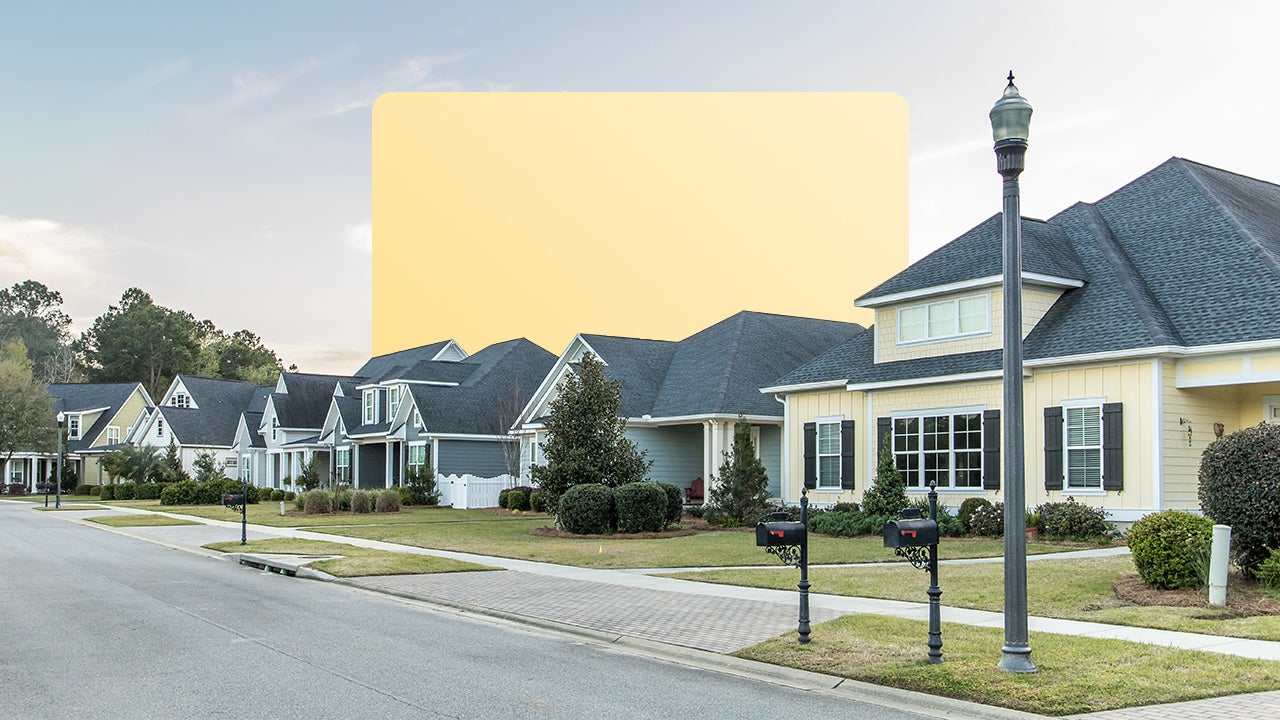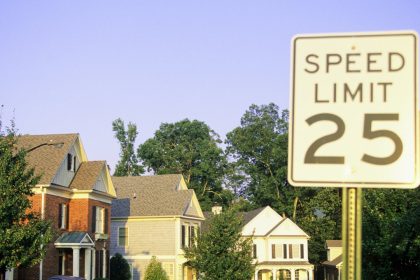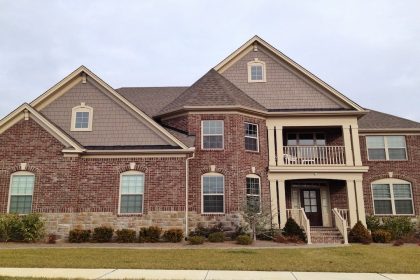The most difficult U.S. housing market in decades continues to encumber prospective homebuyers, who need an annual household income of $116,986 to afford the typical home, according to Bankrate’s new 2025 Housing Affordability Study. That’s almost a 50 percent increase since early 2020, when the income needed to buy a typical home was $78,236.
What’s more, homebuyers in 30 states and the District of Columbia need a six-figure household income to afford the typical home in their area, according to Bankrate’s analysis. Five years ago, buyers in just six states and the District of Columbia needed a six-figure income to afford the typical home.
“Between elevated mortgage rates and the rise of home prices nationally to a record level, many aspiring homebuyers feel like owning a home is out of reach,” says Mark Hamrick, senior economic analyst for Bankrate. “We can’t say when these conditions will ease, but we should note that home prices and availability widely vary around the nation and even throughout larger communities or metro areas. Some combination of patience and flexibility is called for.”
Our study is based on an analysis of the minimum annual pre-tax income needed to afford a median-priced home (the “typical” home) in 2025 compared to 2020. Using median home sale price data from Redfin, homeowners insurance data from Quadrant and property tax data from ATTOM, we estimated monthly mortgage payments in all 50 U.S. states, the District of Columbia and nationwide. From there, we made assumptions about the homebuyer (a 20 percent down payment, for example), then derived the minimum income needed to afford a typical home this year.
Bankrate’s key findings
- To afford the typical home — defined as a home at the median national sale price of $418,489 as of January 2025 — Americans need an annual household income of $116,986, up 49.5 percent since January 2020.
- Homebuyers in 30 states and the District of Columbia need at least $100,000 in annual household income to afford the typical home in their area as of January 2025 — an increase from only six states and the District of Columbia in January 2020.
- The District of Columbia requires the most income to afford a typical home in the area as of January 2025, at $240,009, followed by Hawaii at $235,638. West Virginia requires the least, at $64,179.
- Since January 2020, the income needed to afford a typical home has increased the most in Utah (+89.4%), Montana (+84.6%), Wyoming (+79%), Maine (+77.4%) and Tennessee (+76.9%).
- Since January 2020, the income needed to afford a typical home has increased the least in Texas (+25.8%), Louisiana (+26%), Kansas (+31.1%), North Dakota (+33.6%) and Illiniois (+35.2%).
Bankrate data center
Every week, Bankrate publishes proprietary surveys, studies and rate data, providing the latest data-driven insights on the state of Americans’ personal finances — including credit card debt, homeownership, insurance, retirement and beyond.
See more
Income needed to afford a typical home verges on $117,000
Since January 2020, a mix of factors has shoved homeownership further out of reach for many, including fast-growing home prices. In the last five years, the average hourly wage increased 4 percent, when adjusted for inflation. Meanwhile, the median home sale price rose 20 percent, from an inflation-adjusted $349,750 in January 2020 to $418,489 in January 2025, according to Redfin.
The climb in mortgage rates since the pandemic also drove up the income needed to afford a typical home. Rates jumped more than three full percentage points, with the average 30-year fixed mortgage at 3.68 percent in January 2020 and compared to 7.09 percent in January 2025, according to Bankrate data.
Together, these forces have helped raise the home affordability bar to an annual household income of nearly $117,000 — a leap of almost 50 percent in the past five years.
States that require the most and least income to afford a typical home
There’s no such thing as a national housing market, of course, but rather a collection of smaller local markets. At the state level, homebuyers need a six-figure annual household income to afford a typical home in 30 states and the District of Columbia — a much bigger swath compared to only six states and the District of Columbia in January 2020.
Top 5 states requiring the most income to afford a typical home
Our analysis found that buyers in the Northeastern and Western regions need the highest incomes to afford a typical home, with two states and the District of Columbia requiring more than $200,000. The top five states that require the most income are:
- District of Columbia: $240,009
- Hawaii: $235,638
- California: $213,447
- Massachusetts: $174,392
- Colorado: $168,643
Top 5 states requiring the least income to afford a typical home
The Midwestern and Southern regions are more affordable, with buyers requiring the least amount of income in these areas. The top five states that require the least income are:
- West Virginia: $64,179
- Iowa: $70,437
- Ohio: $71,080
- Mississippi: $72,072
- Indiana: $72,342
Income needed to afford a typical home rose by 50 percent in over half the U.S. since 2020
Since January 2020, the annual household income needed to afford a typical home has increased by more than 50 percent in 34 states, primarily due to tightening affordability brought on by higher rates and demand from pandemic-spurred migrations. Homeowners from California and Seattle flooded into Mountain and other West states, while those in Northeast hubs like Boston and New York relocated to Florida, the Carolinas and Tennessee.
The biggest jump was in Utah, where the needed income surged 89.4 percent over the past five years to $151,956. The median home sale price in Utah was $605,400 as of January 2025, compared to an inflation-adjusted median of $433,546 in January 2020, according to a Bankrate analysis of Redfin pricing data.
Montana saw the second-largest increase in needed income, up 84.6 percent to $142,316. There, the median home sale price as of January 2025 was $535,900.
Wyoming, Maine and Tennessee also saw needed incomes spike since 2020, with Wyoming up 79 percent to $131,070; Maine up 77.4 percent to $110,889; and Tennessee up 76.9 percent to $103,411.
Somewhat surprisingly, the annual household income needed to afford a typical home increased the least in Texas, up 25.8 percent since January 2020 to $105,633. The median home sale price rose from $290,162 in January 2020, when adjusted for inflation, to $337,600 in January 2025, according to Redfin.
While the Texas labor market has been moving, the state also has plenty of buildable land that’s kept home prices tamped down. In addition, our methodology included not just mortgage rates and home prices, but also homeowners insurance and property taxes. Texas experienced favorable trends on those fronts.
The Lone Star State was followed by Louisiana, Kansas, North Dakota and Illinois, which all saw smaller increases in the past five years, ranging from 26 percent in Louisiana to 35.2 percent in Illinois. These states have experienced less in the way of job and population growth compared to others.
Home prices and availability widely vary around the nation and even throughout larger communities or metro areas. Some combination of patience and flexibility is called for.
— Mark Hamrick, Bankrate Senior Economic Analyst
Tips for aspiring homebuyers in 2025
The income needed to buy a home isn’t what it used to be, but that doesn’t mean you’re automatically shut out of homeownership. Whether you’d like to buy soon or a few years from now, here are our tips:
- Understand how far your income goes. Our how much house can I afford calculator estimates your homebuying budget based on income, debt and other factors. This can be a good starting place if you’re not sure whether you’re ready to buy.
- Focus on your credit score. Your credit score is the most important factor determining your mortgage rate, so well before applying for a loan, make sure you’re paying your bills on time and resolving any issues on your credit report. The higher your score, the lower your rate and the more likely you’ll be able to afford a home and the monthly mortgage payment.
- See if you’re eligible for down payment assistance. Many down payment assistance programs are designed for buyers with lower to moderate incomes. Plus, the hurdles to homeownership have become so high that it’s not unusual for first-time buyers to amass $100,000 or more in assistance.
- Consider a range of housing options. Your first home doesn’t have to be your forever home. Condos and townhomes typically have lower price points, so you might be able to better afford these types of properties if you have a lower income.
- If you’re not ready, have patience. The decision to buy a home now or wait comes down to your individual situation. “For anyone who believes they can’t afford to buy in the near-term, there’s no shame in renting,” Hamrick says. “I’d rather see someone continuing to bolster their savings, including their down payment fund, as well as emergency savings and to pay down debt.”
Full summary: Annual household income needed to afford the typical home by state
Read the full article here
















